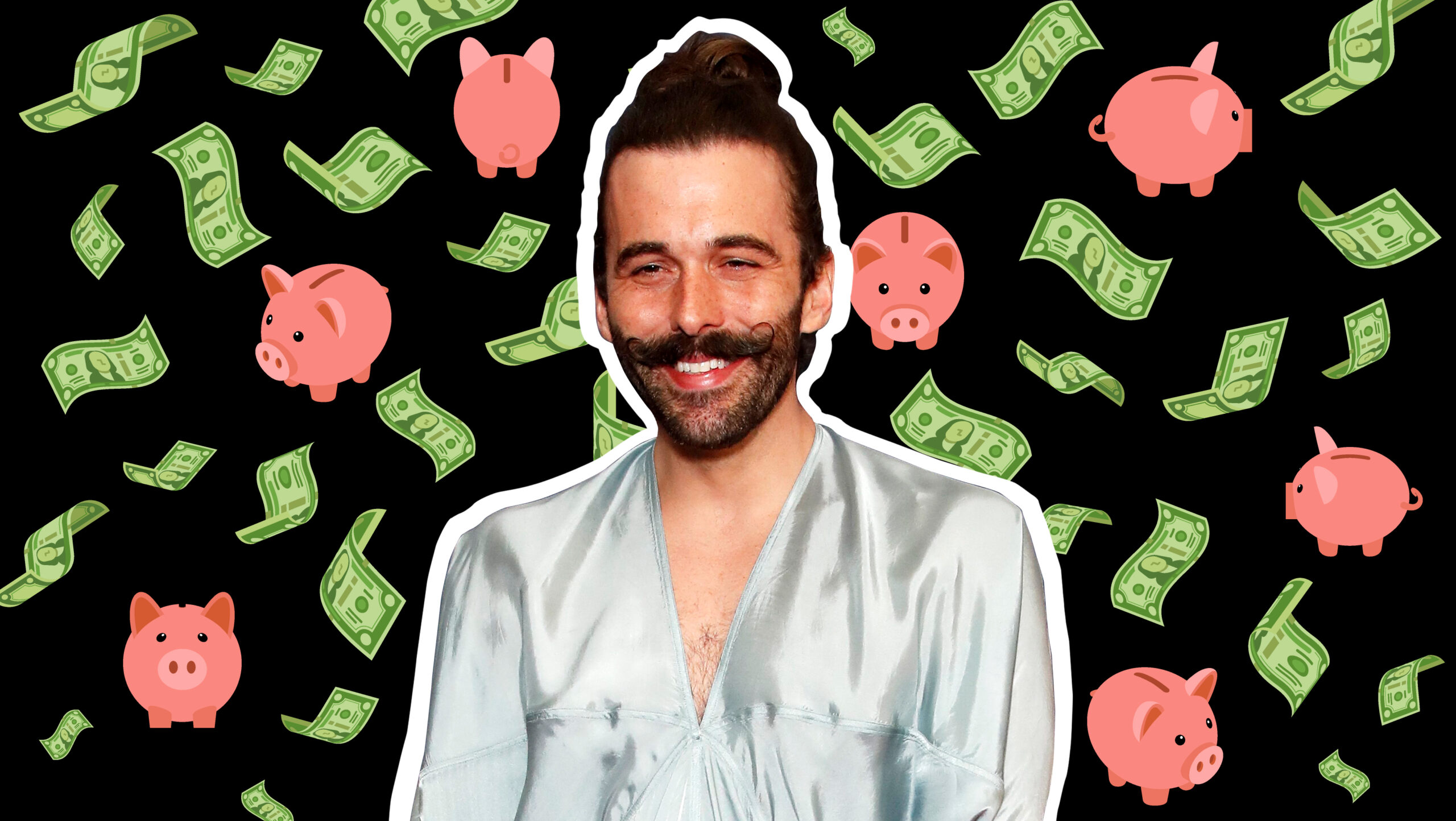Two weeks into Pride month, Jonathan Van Ness — one of Queer Eye’s “fab five” — came out as non-binary in the pages of Out Magazine. Perhaps more accurately, he came out as a brand ambassador for the nail polish company essie, in a Pride-themed campaign that alluded to Van Ness’ experience of overcoming internalized homophobia and accepting his non-binary identity. Invoking the language of social responsibility and public good, Van Ness described his product placement-cum-coming out as serving a higher communal purpose: “I think any way I can let little boys and little girls know that they can express themselves and they can like be — like, making iconic partnerships with brands like Essie no matter how they present is really important and exciting.”
Van Ness — and the fab five in general — are part of a growing cast of LGBTQ2 content creators generating monetizable content that prominently features their gender and sexual identities. From models to makeup artists to writers, these are the online personalities who have made a name for themselves by putting their queer identities on display for the wider world. Think: YouTubers Gigi Gorgeous and Nikita Dragun, perpetual panelists and photoshoot subjects Jacob Tobia and Alok Vaid-Menon, and thirst trappers Laith Ashley and Cheyenne Parker. Their content is expansive and varied — they talk about makeup and modelling, their transitions and their hobbies — but they are all viewed as purveyors of a particular message of inspiration and awareness. Their content creation is usually presented as being for the public good of their communities. Their work is framed as a form of activism, and their influencer marketing as a step toward LGBTQ2 liberation.
As the visibility and size of LGBTQ2 communities increases, so too has their social media audience. In many ways, these content creators are the public face of the LGBTQ2 community. And in turn, influencer marketing agencies large and small recognize the value of this expanding queer and trans audience. Their blogs espouse the virtues of active inclusion, and they highlight LGBTQ2 influencers as available talent or people to watch.
“Visibility is the bread and butter of the LGBTQ2 content economy”
It’s difficult to find information on influencer marketing that doesn’t simply represent the interests of a particular brand or agency, but by all accounts, the industry is massive — and so is its cash flow. In 2017, global influencer marketing spending was $2 billion, according to Business Insider; it’s projected to rise to $10 billion by 2022. Depending on the platform and the product, even those with comparatively small audiences (like nano- or micro-influencers) can earn well from these campaigns, while mega-influencers can rake in millions. The capital swirling around this space has increased as well. And because brands have recognized the impact of influencer marketing, the industry has seen a massive influx of new investment capital. In June 2019, investors raised $50 million for an agency designed to help influencers manage their financial relationships with brands. A week later, venture capital funds poured $12 million into the development of a new influencer marketing platform.
LGBTQ2 inclusion in this financial outpour is lauded by agents and spectators as a turning tide of visibility. And as a non-binary person, this visibility is supposed to be my top priority. Non-binary people are, apparently, in constant need of new attention from any brand wiling to give it. Visibility is the bread and butter of the LGBTQ2 content economy. Everyone who shares my identity, regardless of our vast differences in experience, is my sibling in struggle, and their influencer campaigns are a win for those who have been erased from history, neglected from public policy, demonized as predators or shunned for being too much or too little of a certain gender expression. But through visibility, we (allegedly) have the opportunity to change all that.
Visibility is a handy buzzword, and representation is valuable. Yet there is something troubling about the way these transactional relationships between brands and individual LGBTQ2 people are accepted as a form of activism without any accompanying commitment to the causes that directly affect the most vulnerable members of our communities. These include transgender people of colour, sex workers, those living in poverty and those living with HIV.
While Van Ness was coming out via spon-con, for instance, organizers in New York rallied to protest the death of Layleen Polanco, an Afrolatina transgender woman who was found dead under mysterious circumstances in her Rikers Island cell. Polanco was arrested on misdemeanor charges and detained when she was unable to provide $500 bail. Two months into her stay at Rikers, she died. Just over a week prior, a Salvadoran transgender woman named Johana Medina Leon died in the Del Sol Medical Center in El Paso, Texas; she had been held in ICE custody for seven weeks, where her friends allege she was denied access to medical care as part of a program of routine dehumanization of trans and queer asylum seekers. In Ontario, Black trans woman and sex worker Moka Dawkins has remained incarcerated in unsafe conditions for months for allegedly defending herself from a violent client.
In all of these instances, contemporary organizers are taking up the mantle of activism that’s been going on for generations — and they offer more than just visibility. In Canada, groups like Maggie’s or Prisoners HIV/AIDS Support Action Network have been fighting to improve services and reform policies on behalf of trans women, sex workers, folks with HIV and others. In the US, abolitionist organizations and groups like ACT UP have been lobbying for decades for changes to immigrant detention policies and access to medication. LGBTQ2 activism can mean all kinds of things, and at times, it may include visibility. But as events and issues like these demonstrate, our activism must also go beyond just being seen.
“Consumer activism is no stand-in for revolution”
Visibility, in and of itself, is not morally good or bad. However, it is no substitute for on-the-ground organizing and coordinated coalition building — direct and targeted responses at the grassroots level to the injustices that disproportionately affect marginalized LGBTQ2 people like Polanco, Leon and Dawkins. Consumer activism is no stand-in for revolution. To combat the material issues and political problems that contribute to transphobic violence and discrimination, a lot more must be done, and it must fall outside of what the rich, white and cisgender consider acceptable behaviour. LGBTQ2 inclusion in the influencer marketplace may be seen as a win in the short term, but it is only a win for those few who are able to cash in on it. This kind of inclusion may open the door to more opportunities, wider representation and greater awareness of LGBTQ2 experiences and causes. Yet much of what LGBTQ2 people go through is not represented in this content; it’s certainly not addressed through campaigns by companies like ride-sharing giant Uber, or gym/gentrification engine Equinox, or software corporation Palantir, which all contribute to the same oppressive systems that endanger marginalized LGBTQ2 people.
My problem is not that some trans people got a couple thousand dollars for corporate shilling. Rather, I am uncomfortable with how smoothly and painlessly this plainly transactional relationship has been packaged as a form of activism, a dead-eyed and clickably commercial call to action emanating from the same people who simultaneously flood their social media platforms with the insistence that “Stonewall was a riot.” Maybe so. But when trans people are still dying due to criminalization and poverty, what use is any form of “activism” that does not call it out, work to defeat it and hold it accountable? What merit is there to activism that only demands we buy more, not change the policies that kill us?
It’s easy for companies to score progressive points by creating a wider market for their products, and it’s easy for influencers to treat their money-making platforms as outlets for social change. But it is not activism, and it does very little to improve the circumstances of those who are so often forgotten by the LGBTQ2 mainstream — sex workers, immigrants, those in prison and trans people of colour who don’t have the kind of capital or status necessary to insulate themselves from the violence of racism and transphobia. Now that Pride month has come to a close, it’s worth asking why we accept that consumer choice is all we have at our disposal to advocate for improved conditions for transgender people. ”Visibility” is not enough.


 Why you can trust Xtra
Why you can trust Xtra


